《SPACE LAW IN THE UNITED NATIONS》
| 作者 | 编者 |
|---|---|
| 出版 | MARTINUS NIJHOFF PUBLISHERS |
| 参考页数 | 256 |
| 出版时间 | 1985(求助前请核对) 目录预览 |
| ISBN号 | 9024731577 — 求助条款 |
| PDF编号 | 812895028(仅供预览,未存储实际文件) |
| 求助格式 | 扫描PDF(若分多册发行,每次仅能受理1册) |
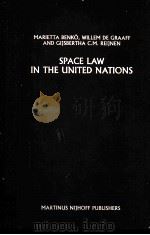
CHAPTER ONEREMOTE SENSING BY SATELLITESby W.de Graaff and G.C.M.Reijnen1
Introduction1
1.1The Technique of Remote Sensing by Satellites3
1.1.1 Passive Sensors4
1.1.2 Active Sensors5
1.1.3 Military Instrumentation6
1.1.4 Ground Support Facilities7
1.2Remote Sensing Systems in Existence7
1.2.1Remote Sensing Satellites for Civilian Use8
1.2.1.1 Meteorological Missions8
1.2.1.2 Earth Resources Missions9
1.2.2 Remote Sensing Satellites for Military Use15
1.3Remote Sensing by Satellites and Legality18
1.3.1 General Survey of Legal Problems Involved18
1.3.2 Background Problems Preventing a Legal Regulation19
1.3.3 Endeavours to Formulate a Legal Regulation-1972 through 198420
1.4 Internationalization of Remote Sensing by Satellites27
1.5 Conclusion29
Notes31
Annexes32
CHAPTER TWOTHE USE OF NUCLEAR POWER SOURCES IN OUTER SPACEby M.Benko and W.de Graaff49
Introduction49
2.1Accidents in the History of the Use of NPS49
2.1.1 Accidents in the USSR Space Programme49
2.1.2 Accidents in the US Space Programme54
2.2Satellite Orbits Before and During Re-entry54
2.2.1 The Orbit and its Position in Space Relative to the Earth55
2.2.2 Changes of a Satellite Orbit in Time58
2.2.3 The Re-entry of a Satellite and its Uncertainties58
2.2.4 Some Examples59
2.3Existing Types of Nuclear Power Sources and their Use in Outer Space60
2.3.1 Different Types of Power Sources Used in Outer Space60
2.3.2 Radio-isotope Thermo-electric Generators(RTGs)62
2.3.3 Nuclear Reactors62
2.4Safety Measures Connected with the Use of NPS in Outer Space63
2.4.1 Radiation Effects on the Human Organism64
2.4.2 Safety Measures for RTGs65
2.4.3 Safety Measures for Nuclear Reactors66
2.5The Probability of Accidents Involving NPS in Outer Space68
2.5.1 Adopted Characteristics of Typical NPS69
2.5.2 Release and Dispersion of Radio-active Debris70
2.5.3 Global Distribution Probabilities71
2.5.4 Results of Probability Estimates72
2.6 Summary of Safety Considerations;Conclusions74
2.7Deliberations in the United Nations:UNCOPUOS Scientific and Technical Sub-Committee75
2.7.1 Sessions 1978 through 197975
2.7.2 Comments on Basic Conclusions Drawn by the Scientific and Technical Sub-Committee77
2.7.3 1980 Session79
2.7.4 1981 Session80
2.7.5 Sessions 1982 through 198481
2.8Deliberations in the UNCOPUOS Legal Sub-Committee83
2.8.1 Sessions in 1978 and 197983
2.8.2 Comments on the Basic Question of the Necessity of Supplementary Legal Norms for the Use of NPS85
2.8.3 1981 Session86
2.8.4 1982 Session87
2.8.5 1983 Session90
2.8.6 1984 Session92
Notes93
Annexes97
CHAPTER THREEQUESTIONS RELATING TO THE DEFINITION/DELIMITATION OF OUTER SPACE AND OUTER SPACE ACTIVITIES AND THE CHARACTER AND UTILIZATION OF THE GEOSTATIONARY ORBITby M.Benko and W.de Graaff121
Introduction121
3.1The Delimitation Question:Some Scientific and Technical Aspects122
3.1.1 Basic Differences between Air Space and Outer Space122
3.1.2 Spacecraft Trajectories at Launch and Re-entry124
3.2Present State of the Legal Debate and Suggested Solutions within UNCOPUOS127
3.2.1 The Spatial Approach127
3.2.2 The Functional Approach129
3.2.3 A Third Approach to the Delimitation Question129
3.3Comments130
3.3.1 Arguments Pro and Contra Delimitation130
3.3.2Arguments in Favour of Delimitation130
3.3.2.1 State Sovereignty and its Limitations130
3.3.2.2 Possible Damage Resulting from the Passage of Spacecraft through Foreign Air Space131
3.3.2.3 The Spaceplane,a New Development132
3.3.3Arguments against Delimitation133
3.3.3.1 Practical Experience without Delimitation up to the Present133
3.3.3.2 Gradual Transition between Air Space and Outer Space134
3.3.3.3 Implications of Possible Future Developments135
3.3.4 The Passage of Spacecraft through Foreign Air Space135
3.3.5 Summary:Present Situation and Future Aspects of Delimitation136
3.4Questions Relating to the Geostationary Orbit137
3.4.1 Basic Facts about the Geostationary Orbit137
3.4.2 Present State of the Legal Debate137
3.4.3 Comments138
Notes142
Annex145
CHAPTER FOURTHE PREVENTION OF AN ARMS RACE IN OUTER SPACEby G.C.M.Reijnen147
Introduction147
4.1Existing or Planned Military Systems for Outer Space151
4.1.1 The USSR and its Military Space Programme152
4.1.2 The USA and its Military Space Programme153
4.1.3 Some General Remarks and Comments158
4.2History of Counteracting Measures of a Political Nature158
4.2.1 International and National Activities Outside and Inside the United Nations159
4.2.2 The Outer Space Treaty of 1967,in particular Article IV162
4.2.3Major Proposals Regarding Demilitarization Brought before the United Nations167
4.2.3.1 Proposal by the USSR of August 10,1981167
4.2.3.2 Proposal by France of Spring 1978168
4.2.3.3 Other Recent Negotiative Texts171
4.2.3.4 The UNISPACE 1982 Conference and Demilitarization173
4.3Legal Aspects as Regards the Militarization of Outer Space175
4.3.1Interpretation of Relevant Terms in Space Law175
4.3.1.1 The Terms 'Peaceful','Non-military' and 'Non-aggressive'176
4.3.1.2 The Terms 'Disarmament' and 'Demilitarization'177
4.3.1.3 The 'Common Interest' Principle178
4.3.2 Space Law as Part of International Law178
4.4 Conclusion182
Notes183
Annexes185
1985《SPACE LAW IN THE UNITED NATIONS》由于是年代较久的资料都绝版了,几乎不可能购买到实物。如果大家为了学习确实需要,可向博主求助其电子版PDF文件(由 1985 MARTINUS NIJHOFF PUBLISHERS 出版的版本) 。对合法合规的求助,我会当即受理并将下载地址发送给你。
高度相关资料
-
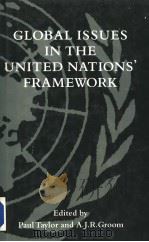
- Global Isssues in the United Nations' Framework
- 1989 MACMILLAN
-

- THE DEVELOPMENT OF INTERNATIONAL LAW THROUGH THE POLITICAL ORGANS OF THE UNITED NATIONS
- 1963 OXFORD UNIVERSITY PRESS
-

- Studies In International Space Law
- 1997 Clarendon Press
-
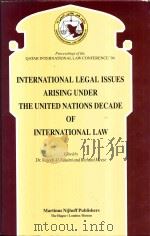
- International Legal Issues Arising Under the United Nations Decade of International Law
- 1995 Martinus Nijhoff Publishers
-
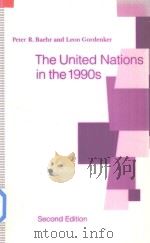
- The United Nations in the 1990s Second Edition
- 1994 Martin's Press
-

- AFRICA IN THE UNITED NATIONS
- 1963 NORTHWESTERN UNIVERSITY PRESS
-
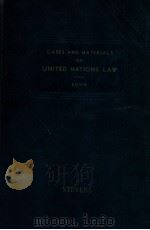
- CASES ON UNITED NATIONS LAW
- 1956 STEVENS & SONS LIMITED
-
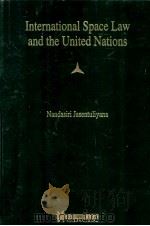
- International Space Law and the United Nations
- 1999 Springer
-
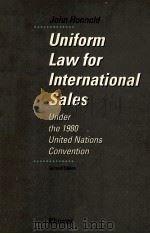
- UNIFOM LAW FOR INTERNATIONAL SALES UNDER THE 1980 UNITED NATIONS COVENTION
- 1991 KLUWER LAW AND TAXATION PUBLISHERS
-
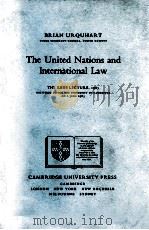
- THE UNITED NATIONS AND INTERNATIONAL LAW
- 1986 CAMBRIDGE UNIVERSITY PRESS
-
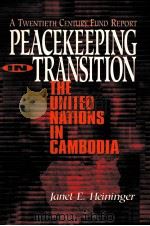
- PEACEKEEPING IN TRANSITION THE UNITED NATIONS IN CAMBOOIA
- 1994 THE TWENTIETH CENTURY FUND PRESS
-

- UNIFORM LAW FOR INTERNATIONAL SALES UNDER THE 1980 UNITED NATIONS CONVENTION
- 1980 KLUWER LAW AND TAXATION PUBLISHERS
-

- CRIMINAL LAW IN THE UNITED STATES
- 1910 CHARITIES PUBLICATION
-

- THE UNITED NATIONS ORGANISATION HANDBOOK
- 1946 THE PILOT PRESS LIMITED
-
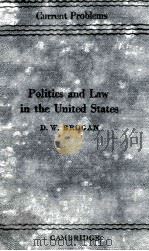
- POLITICS AND LAW IN THE UNITED STATES
- 1945 CAMBRIDGE AT THE UNIVERSITY PRESS
提示:百度云已更名为百度网盘(百度盘),天翼云盘、微盘下载地址……暂未提供。➥ PDF文字可复制化或转WORD